EMPOWERING ‘BHARAT’

Traversing initial corporate tracks with ITC and IBM, strengthening career momentums with his alma mater, Maulana Azad National Institute of Technology, Bhopal (NIT Bhopal) and SP Jain Institute of Management & Research (SPJIMR), Siddharth Chaturvedi eventually found his calling with the All India Society for Electronics and Computer Technology (AISECT), a social enterprise that has been steering information and computer technology (ICT) services, skill development, employment, higher education, financial inclusion, and e-governance, to rural youths and across Tier-2 and Tier-3 cities.
As the Executive Vice President of AISECT, Siddharth also carries forward his father, Santosh Kumar Choubey’s legacy, a renowned social entrepreneur and educationalist who founded AISECT in 1985 and is the Chancellor of the AISECT Group of Universities. Siddharth shared AISECT’s role in managing its 30,000+ centres nationwide, scaling business diversifications, and mobilising financial inclusivity for empowering ‘Bharat’ as part of India’s lifeline
"We envisage that with the proposed merger of the Education and the Skills Ministry as the common conduit and once the new NEP policy provisions are met, a lot of skill development and training will move into the formal education segment. Therefore, we will witness vocational training and skill development components moving into schools, colleges, and higher education campuses and universities which will beckon a significant shift in skill-based formative education"
"We are engaged with Microsoft for the skilling of women from Tier-3 and Tier-4 districts which includes Korba and Durg in Chattisgarh, Chitrakoot, and Sehore in MP, for imparting digital skills training and linking them with the relevant jobs. We run another large-scale project with Microsoft with an online delivery model which targets two lakh beneficiaries in developing digital skills"
- Siddharth Chaturvedi,
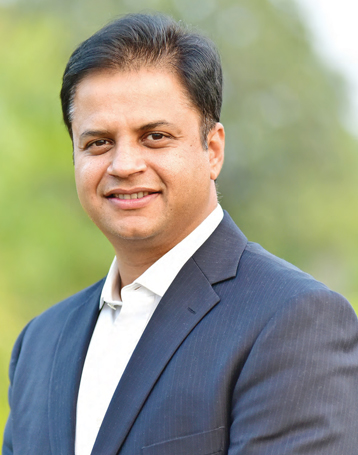
"India is poised today for social entrepreneurship in exploring startup ecosystems and with favourable government policies, it no longer remains as some dull social work compared to the development sector of yesteryears,” said Siddharth Chaturvedi, Executive Vice President of the All India Society for Electronics and Computer Technology (AISECT) Group. AISECT is a leading social enterprise working extensively across skill development, rural job placement, higher education, online education, financial inclusion, e-governance, and other ICT-based services for building inclusivity in India’s rural and semi-urban heartlands.
Serving his 13th year with AISECT, the second-generation entrepreneur with six years of corporate work experience realised his need to practice, create and innovate in an environment beyond the corporate world. “Some ten years ago, I realised that the social sector or the development sector was beginning to take shape with more private sector participation. I thought it might be a good opportunity to start building some of the initiatives that I had in mind and thought of scaling up and expanding some of the groundwork for the platform that the organisation had already built until then,” he said. Siddharth is the Chairman of the CII Bhopal chapter and a governing body member of the Dr C. V. Raman University in Chhattisgarh and the Rabindranath Tagore University, Madhya Pradesh (MP). He shared his role and AISECT’s initiatives in developing solutions for India’s underserved populace and empowering India from the hinterlands.
AISECT has a pan India presence in 605 districts, 2100 blocks, and 8550 panchayats across 29 states and four union territories, mobilising its 31,000 centres, 14 state offices, and 32 regional offices. Operating with 20 state skill development systems and a few central government ministries, the organisation has trained over 26 lakh people and empowered over 50 lakh people through its innovative products and services. An excerpt.
Back to the future
Corporate Citizen: How has AISECT transitioned after you came on board?
Siddharth Chaturvedi: I joined AISECT in 2009 and, thereon, have driven and scaled-up initiatives, primarily in the vocational training and skill development areas. The initiative also optimised the advent of the national e-governance plan and the common service centres, which were taking shape and directing them towards building knowledge and financial inclusivity across India’s rural and semi-urban regions. We have scaled up our second vertical with around 8000 banking kiosks as part of the financial inclusion model. Since I onboarded AISECT, we have worked extensively to step up skills and vocational training, financial inclusion, and education as the three prime verticals. I have been involved in the core operations and the end-to-end project deliveries, from strategy designing to hiring the team and setting up the pilot and the subsequent scale-ups. Some of the initiatives are ongoing, some are mature, while some are greenfield ones as we stand today.
CC: What is AISECT’s USP in the social sector?
Our core USP or strength is in the trust we have earned over the years. By putting in extensive years in the sector, staying relevant, and holding on to our services across all our locations, we continue to offer amenities via our extensive networks centre. Unlike many agencies in the sector who have come and gone within 1 to 3 years, the nature of our presence is relatively permanent. We set up a centre with a long-term view and have been around long enough and have crossed challenges in building the trust factor.
CC: How did you streamline the various AISECT offerings?
Earlier, the common service centres were set up in collaboration with the private sector, and the entire country was divided into zones. We too, onboarded private sector organisations but with good grassroots connections and entrepreneurship development experience for service centres. We undertook an opportunity that covered around 10,000 common service centres in MP, Chhattisgarh, and Punjab. And through that experience, we realised the vast scope of education and skill-oriented and other services that we could tap via an IT-led infrastructure in the rural areas. On analysing all the services, financial inclusion came up as a significant gap with ample opportunity that had to be internally scaled up.
"An important transition has been the evolution of team’s skill set over the past decade. We find ourselves in a great need of integrating the right mix of a team in each of our verticals to shoulder the experience of our older core team who have been with us for the last 20 years"
CC: How did you build the vocational stream?
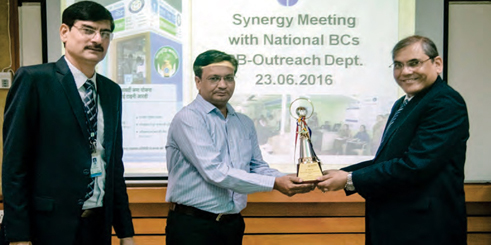 AISECT received Financial Inclusion Excellence award
AISECT received Financial Inclusion Excellence awardfrom the State Bank of India, Delhi, 2016
The vocational training and the skill development initiative were limited to a couple of states, such as MP and Chhattisgarh. I realised that with the help of the then newly formed National Skill Development Corporation (NSDC), we could replicate the self-sustainable time-tested model in other parts of the country. The significant achievement was signing a partnership with the NSDC in 2011, which expanded our operations to 13 other states outside MP and Chhattisgarh. It allowed us to set up offices and hire more people in the field and diversify into other developmental segments.
CC: What is the concept of the AISECT banking kiosks?
At the grassroots level, AISECT’s banking kiosks offer several services, including Pradhan Mantri MUDRA Yojana, Pradhan Mantri Suraksha Bima Yojana, and Atal Pension Yojana, among others. With the help of the SBI (State Bank of India), we set up the first banking kiosk in Bhopal, and the model worked very well, following which SBI ramped it up to other parts of the country. We also got the opportunity to set up a few thousand banking kiosks in rural areas. We started with one kiosk, which has scaled up to 8000 in partnership with SBI and other major PSU banks such as Central Bank of India, Canara Bank, Union Bank, Bank of India, and Bank of Baroda. We have a target of 15,000 banking kiosks to deliver financial inclusion services.
CC: Did you face challenges in setting up these banking kiosks?
It was easier for us because of the common service centres and we had to mount this additional service at the centres. We managed to set up the initial 1000 banking kiosks within the first 2-3 years.
Skill building
CC: What are AISECT’s skill-building models?
We operate via two models. One is a fee-based model where the students pay us directly, and in the funded model, the funding either comes from the government or our industry partners. These assume different names under the respective state or central government prerogatives but are placement-linked skills training programmes. These are the Pradhan Mantri Kaushal Vikas Yojana, under the Ministry of Skill Development and Entrepreneurship, and the Deen Dayal Upadhyaya Grameen Kaushalya Yojana (DDU-GKY), under the Ministry Of Rural Development, among others. A training component for the urban poor comes under the Ministry of Urban Development. There is a scheme for minorities called “Seekho aur Kamao” under the Ministry of Minority Affairs as a skill development scheme for youth in the 14-35 years age group for improving the employability of existing workers and school dropouts. Likewise, there is a slight change of nomenclature at the state level with schemes such as the Mukhyamantri Kaushal Vikas Yojana.
CC: How dependable are CSR-aided skill development linkages?
CSR spending on skills, livelihood, and education has grown rapidly and is expected to grow further. Some six years back, we worked with only one PSU (public sector undertaking)-NTPC (National Thermal Power Corporation), for skilling of youth around their plants. Currently, we engage with 12 CSR partners, with many more showing interests in the social sector.
CC: Can you exemplify a CSR partnership?
We are engaged with Microsoft for the skilling of women from Tier 3 and Tier 4 districts which includes Korba and Durg in Chattisgarh, Chitrakoot, and Sehore in MP, for imparting digital skills training and linking them with the relevant jobs. We run another large-scale project with Microsoft with an online delivery model which targets two lakh beneficiaries in developing digital skills. Likewise, we work with the United Nations Development Project (UNDP), JSW, and other foundations. Education and skilling are the mainstays for the CSR sectors and we would like to build this up further.
CC: What about industry-linked training initiatives?
Industry-linked training is the other funded area gaining momentum. Here, the job profile requirement is the first consideration, and then students are mobilised according to their respective profiles. Training is delivered based on the curriculum provided by the industry. We are associated with a few industry partners, and this is an area that is expected to see positive transitions for youth and skilling.
CC: How will the proposed National Education Policy (NEP) impact skilling initiatives?
We envisage that with the proposed merger of the Education and the Skills Ministry as the common conduit and once the new NEP policy provisions are met, a lot of skill development and training will move into the formal education segment. Therefore, we will witness vocational training and skill development components moving into schools, colleges, and higher education campuses and universities which will beckon a significant shift in skill-based formative education.
CC: What about advanced skill-based training?
The second big shift is that the training and skilling are moving into the shopfloors and the industry premises with the advent of apprenticeship and internship schemes. The realisation that a part of learning happens in the working environment and not in standalone training centres has gained prominence. So, a combination of these channels will influence the rural and urban poor to access the job market. India is way behind in hiring skilled apprentices compared to those in developed countries but I see this number growing, a win-win for both the industry and the learners.
"We also need to address the structural challenge of accessing finance and funding for the sector’s growth. Social sectors cannot grow by taking loans from banks or even internal surpluses"
Incubating progress
CC: How did AISECT gain inroads into start-up incubation centres?
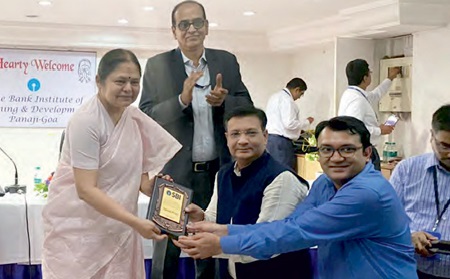 AISECT received Financial Inclusion Excellence award from
AISECT received Financial Inclusion Excellence award fromthe State Bank of India, Mumbai, 2019
With the explosion of India’s startup economy, one of our affiliated universities-the Rabindranath Tagore University in Bhopal received Central India’s first Atal Incubation Centre (AIC). The Atal Incubation Centre, Rabindranath Tagore University or AIC-RNTU, funded by the NITI Aayog has for the past four years handheld new-age startups. The AIC has created a network of mentors, investors, and industry connections and hosted hackathons, innovative ideas, and startup challenges in the region. It is considered a destination incubation centre for all forms of startups and encourages students to validate their ideas or join our cohort. The startup and incubation concept has now transcended into a new vertical. We have collaborated with TISS, the Indian Institute of Forest Management (IIFM), some agri-based institutions, and agri-tech startups as part of our social entrepreneurship track. More than 40 startups are incubated at the AIC-RNTU.
CC: How can local entrepreneurs tap the incubation centres?
Incubation centres are our fourth vertical and were a natural progression because we deal with local entrepreneurs in setting up centres in rural areas. These entrepreneurs are selected from the community, and we enable entrepreneurship development and creation while handholding requirement for these micro-entrepreneurs, who are smaller than the regular SMEs.
CC: What is the future scope of the incubation centres?
I envisage this segment scaling up rapidly in the coming years. There is a lot of demand for our incubation centres to act as a knowledge partners for standalone colleges or other universities which do not have substantial experience in nurturing startups.
CC: What is the outcome of your financial inclusion models?
With the financial services centre, the 80:20 rule applies as 80% desire a salary or a wage kind of a track, and 20% want business setups. We link the candidates, with any of our ongoing schemes or products. We also connect or refer them to plans offered by the Small Industries Development Bank of India (SIDBI), the National Bank for Agriculture and Rural Development (NABARD), or others in the sector. One of the significant gaps is awareness and information. People don’t know the schemes and the platforms available in their respective areas. We try and bridge these information gaps and also offer an accessible solution through information aggregation in one place, enabling a candidate to discover available avenues and their eligibility in planning their future.
Pen is mightier
CC: What mobilised the AISECT-run group of universities?
I joined AISECT in 2009 but our first university was sanctioned in 2007 to bridge the dire need for a quality higher education ecosystem in rural/semi-urban India. The actual setup began around 2008-2009 when the private sector was encouraged to set up universities nationwide. It opened another opportunity for us as it aligned well with our areas of strength. However, we largely focus on the rural and semi-urban geographical belts. We had considerable experience in mobilising students and understood those geographies and the demands of these students and their parents. It was easier for us to connect, rally, and attract students based on the AISECT brand built over 10 odd years, much before the campuses were established. AISECT, thus, progressed towards higher education as an essential vertical.
CC: How did you chart the birth of these universities?
We selected Tier-2 and Tier-3 locations, to begin with, and not the state capitals, and that’s how our first university came up in Bilaspur (Chhattisgarh) and had a total of five private university campuses affiliated to the AISECT. We have two universities in MP and one each in Chhattisgarh, Bihar, and Jharkhand. These include the Rabindranath Tagore University in Bhopal (MP), Dr. C.V. Raman University in Khandwa (MP), the AISECT University in Hazaribag (Jharkhand), Dr. C.V. Raman University in Vaishali (Bihar), and the Dr. C.V. Raman University in Bilaspur (Chhattisgarh). We hope to scale up and build a few more university campuses in the Northeast, Orissa, and West Bengal.
CC: How has AISECT consolidated its online services?
In the online learning space, we are on the verge of launching two portals within the education space-the AISECT-LEARN (https://courses.aisectlearn.com) and (https://rojgarmantra.com/). The overall vision of the AISECT-LEARN portal is to cater to learners from Tier-2 and Tier-3 locations and offer content in Hindi and other regional languages for skills in demand for today and the next five years. It includes courses on AI, EML, Digital Marketing, and Data Science in English, Hindi, and other vernacular languages. The Rojgarmantra is a jobs portal catering to jobs that match the requirements of Tier-2 and Tier-3 locations. With our extensive network, we hope to reach out to employers and job vacancies at the district levels and offer job seekers the platform to discover local jobs in their vicinities.
CC: How unique is the Rojgarmantra job portal?
The issue with jobs and the migration pattern is that most students in rural areas tend to discover a job in and around their vicinity as they are not very comfortable migrating to a new territory. So, the idea of the job portal will enable students to discover jobs within their districts with district-wise opportunities available across Bhopal, Jabalpur, Jaipur and Udaipur, and the like.
Equalising opportunities
"Women are excellent students and finish their courses too, but the entire value is diminished in rural households as it is tough to retain them. We are trying a multistakeholder approach through counselling, deploying employer representatives for community sessions, and bringing back some older girls"
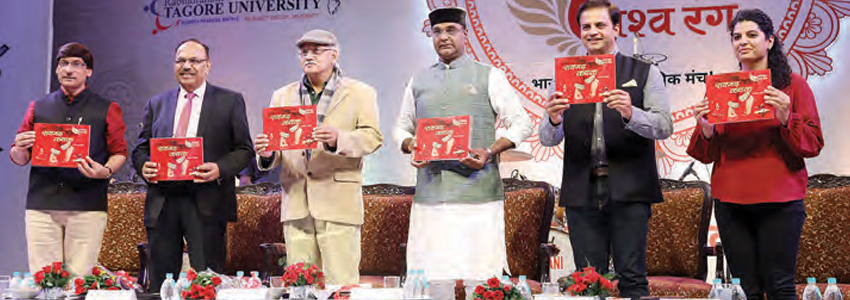
CC: What is the demographic makeup of AISECT’s consumers?
Around 80% of our end customers are from semi-urban or rural backgrounds within districts, either at the block or the panchayat levels. So, whichever verticals we work in, we primarily reach out to these customers for our training centres. Our target individual is usually a school or a college dropout or an unemployed youth looking to seek a gainful track by acquiring skills to start some job or career.
CC: What would be the per capita income of these households?
In the rural areas, and even in urban poor households, since most are single-earning families, they primarily have household incomes somewhere around Rs.2 to 2.5 lakhs per annum (PA), not more than 3 lakhs PA. There are households with wages lower than Rs.1.5 to 1.8 lakh PA, so our first target is to double or enable 1.5 times increase in their existing incomes. If you can get a job for such households with a monthly earning of Rs.10,000 or 15,000 and in some cases Rs.20,000 monthly at the entry-level, is the first step to their upliftment. If we leverage the entrepreneurship root, the upside is even higher.
CC: How do you counsel the rural youths?
Most of our training programmes are either self-funded or government-aided, targeting these candidates. We counsel and handhold by involving the parents too, as they are important decision-makers for the households and thus, bridge access to skill them.
CC: How different is the track for rural entrepreneurship?
Most of our sectors offering banking services, education, skilling, referral services, or any other services are manned and established by someone from a particular district or at the block level location. Therefore, for entrepreneurship development, our target customer is the enterprising individual from that geography desiring to join hands with AISECT and offer its services.
Banking for the ‘Unbanked’
CC: How has AISECT impacted financial inclusivity?
Bringing financial inclusivity is our third competency area and goes beyond opening bank accounts. Rather, we are reaching out to those with no prior banking history and bringing them into the banking network for the first time. The entire approach focuses on first-time account holders. We have been able to open Jan Dhan accounts for them, which enables remittances directly into the beneficiary’s account in subsidies, scholarships, or any help that the government sends out to them. We help them channelise their funds as withdrawals from their bank accounts and also build economic literacy around them.
CC: How about allied banking services for the rural poor?
We offer basic insurance and investment-related products for them. Most of them are introduced to an insurance policy for the first time, and they take it either for cropping, livestock, tractor, or any automobile. We have built tailor-made products that enable investments linked to the National Pension scheme, integrated within our portal, or tied in with a couple of other private sector mutual funds offering low-cost investment products for rural areas.
CC: Your learnings for resolving financial dilemmas for the underserved?
In the financial services domain, most customers are from rural areas, and we now understand the segment quite well. When we think of a service vertical, we focus on our target segment by leveraging our experience and learning. We often revisit and observe how a particular product or a new service has impacted individuals and try to replicate the same and resolve their problems.
Tech trends
"Youths joining the sector was a challenge earlier, but there has been a growing interest amongst the general public and the youth to work in the sector. From the kind of exposure students are getting nowadays or the external stimulus, I have noticed that they are interested in doing an internship"
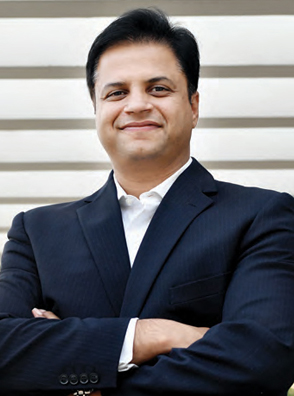
CC: Has technology impacted AISECT functions?
Over the past 10 years, the apparent transition has been the dependence on technology much more than in 2010, and the Covid pandemic has only accelerated this change. Between 2010 and 2013, we handled most of the operations offline. Earlier, there used to be tremendous volumes of registration forms, hard copies, postal contents being dispatched, and a truckful of question papers and answer copies being transacted. We have now successfully migrated this entire core value chain as an end-to-end online platform for our key customers-the students and our partners.
CC: What is the nature of the portal?
Our B2B (business to business) portal helps us transact online with our 31,000+ centres and maintain all the transaction records. These centres can discover their records, transact and pay us, ask questions, answer surveys, and everything on the portal. We encourage students to access their records and AISECT’s modern learning management system, course materials, and content status.
Wall of support
CC: What makes up AISECT’s workforce?
An important transition has been the evolution of team skill sets over the past decade. We find ourselves in a great need of integrating the right mix of a team in each of our verticals to shoulder the experience of our older core team who have been with us for the last 20 years. But we have also built fresh perspectives via content, social media, digital marketing, documentation, report writing, and designing our multiple collaterals by developing a younger team. We have young graduates from the TISS (Tata Institute of Social Sciences), IIFM (Indian Institute of Forest Management), IRMA (Institute of Rural Management Anand), Xavier Institute of Management, Bhubaneshwar (XIMB), Xavier Institute of Social Service (XISS), Ranchi, and the likes. We hope to upkeep this pipeline of younger people joining us on an ongoing basis.
CC: How encouraged are you about young professionals joining the social sector?
Youths joining the sector was a challenge earlier, but there has been a growing interest amongst the general public and the youth to work in the sector. From the kind of exposure students are getting nowadays or the external stimulus, I have noticed that they are interested in doing an internship. Whether it is a project or even if they come and spend some time or ultimately, seek a career in the social sector, we see good interest from younger students approaching our organisation.
CC: How do you deal with attrition?
I am aware that most of them will not be life-timers at AISECT because today’s perspectives and ambitions have changed but I am always hopeful that they will stay on for a tenure of two to five years. This duration is apt for them to add value to our organisation. We understand that employee turnovers would be frequent but I would like to have younger people join us across different verticals.
CC: What about the alumni connections?
We have some 30+ alumni professionals working at our head office and the state offices who have gained their degrees or certifications from one of our universities or training centres. We encourage them and have back-to-back tie-ups with all our universities to recruit students every placement season for our HR department. We are also likely recruiters for our alumni as an established channel.
CC: What about transitions in stakeholder viewpoints?
Our stakeholders are more informed and aware of the whole social sector ecosystem. Their demands have also become very organised and succinct. We work with CSR partners, industry, and government departments, and they all stand almost equal in knowledge, aspirations, and the kind of work they choose to accomplish. It is a welcome and silent change at the state level with the appointment of new bureaucrats who have displayed their vision and connectivity with the youngsters in their thought processes and philosophy. The new bureaucrat brigade, directly and indirectly, enables us to present new ideas or upscale any of our initiatives.
Covid lessons
CC: How did you manage the Covid-triggered digital divide?
Working within our verticals, we realised the need to ensure connectivity for all. However, the system works at two levels, the connectivity per se is the government or the telecom sectors’ priority, and the second is the access to a device. More than connectivity in several households, access to a device was the bigger constraint that became more evident during the lockdown when we delivered classes. In one of our local consultations with the Govt., we proposed the ‘right to device’ by subsidising them for rural households. This shift will likely bring greater learning opportunities for schools and the concept of lifelong learning, a trend slowly penetrating across sections of our society.
CC: How did you resolve the divide?
There is so much content available across open sources today. Therefore, connectivity and device access remain the major constraint. Our option was to move away from synchronous learning and learn asynchronously wherever we could. We sent videos, lectures, PDFs, or any form of downloadable softcopy material for online access, and candidates could revert with their doubts and questions. Despite the new adaptations, we were still not able to cover 30-40% of our students from absolutely remote areas.
Overcoming challenges
"What I have maintained in the last two years is not to miss any opportunity for upskilling or re-skilling yourself. There is an explosion in how one can access content, courses, or knowledge, and it is no longer a constraint. The onus rests with the individual or with the students themselves"
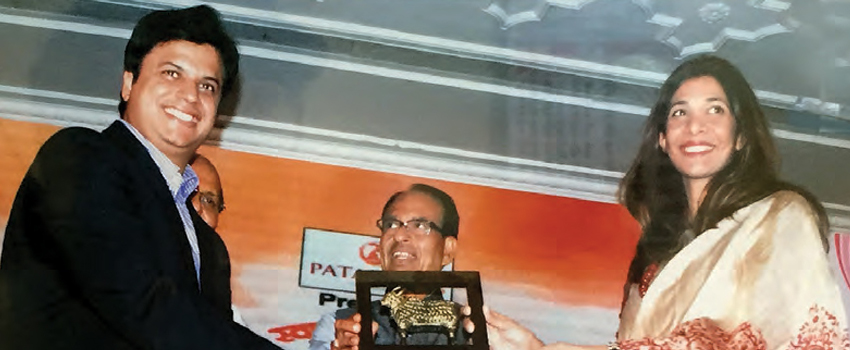 Siddharth Chaturvedi and his wife, Dr Pallavi Rao Chaturvedi being felicitated
Siddharth Chaturvedi and his wife, Dr Pallavi Rao Chaturvedi being felicitated
CC: What are some pressing challenges for AISECT?
One of the apparent challenges faced is in retaining a greater percentage of women in skilling programmes, which gained considerable interest across semi-urban, and rural areas. We are tasked with bringing back women into the workforce and increasing their participation in the overall economy. Women are excellent students and finish their courses too, but the entire value is diminished in rural households as it is tough to retain them. We are trying a multistakeholder approach through counselling, deploying employer representatives for community sessions, and bringing back some older girls and past performers as role models. Despite some progress, it remains a challenge.
CC: What about new initiatives?
We have recently combined livelihoods, skilling, and entrepreneurship as part of a cluster development project in the tribal areas of the Dindori District (MP). Most inhabitants primarily grow minor millets, an indigenous crop in the state known for its nutritional value and we recently realised that there is a big demand outside India for these products. We revisited the community and continued our past interactions with them when we had undertaken running women-led Self-Help Groups (SHGs) through capacity building and given them entrepreneurship development training. We now help them to identify the millet cropping pattern, enable value addition in converting them to millet-based flour or millet-based cookies and help find market linkages. We are working with 500 farmers organised into different groups and the next step will be to involve them in procurement, help run the processing plant and engage in market linkage activities.
Funding
CC: What are the social sector funding challenges?
Funding is essential for scaling up our initiatives, and the source for funding, especially for the overall social and development sector, remains very fragmented. In giving due credit to social entrepreneurship, we also need to address the structural challenge of accessing finance and funding for the sector’s growth. Social sectors cannot grow by taking loans from banks or even internal surpluses.
CC: What changes would help dissipate the funding issues?
The sector is awaiting the implementation of the proposed Social Sector Exchange (SSE), promised in the FY 2019-20 budget announcement and approved by the SEBI on September 28, 2021. If and when it eventually comes up, it will provide customised funding to match the needs of the social or the development sector.
CC: How about philanthropic or offshore (foreign) funding routes for the sector?
The source of funding from CSR foundations, philanthropic organisations, or bilateral aid agencies is limited and restricted to a few agencies. Besides, they have their data set ups and monitoring avenues, processes, presentations, and Expression of Interest (EOIs) that cannot be mastered or understood by most NGOs and social enterprises. There are International funding constraints, such as applying the Foreign Contribution (Regulation) Amendment Act, 2020 (FCRA), which is not an easy task and often a hindrance. Although many have shown interest in deploying their philanthropic capital in India and other developing countries, there is a lack of clarity in raising those funds or bringing them to the home country. If the processing terms for such funds are eased out, tapping this kind of capital can become a long-term sustaining source.
Relevance reinforced
CC: What is your mantra for a young aspirant?
Generically speaking, what I have maintained in the last two years is not to miss any opportunity for upskilling or re-skilling yourself. There is an explosion in how one can access content, courses, or knowledge, and it is no longer a constraint. The onus rests with the individual or with the students themselves. One has to be aware of the changing world of work and the changing priorities in the employment sector. Upskill and constantly reinvent oneself. But, most importantly, connecting within your network, spending some time, or doing an internship should be the core and ongoing objective for lifetime growth.